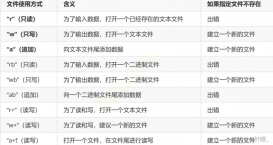解釋器模式(interpreter),給定一個語言,定義它的文法的一種表示,并定義一個解釋器,這個解釋器使用該表示來解釋語言中的句子。
解釋器模式需要解決的是,如果一種特定類型的問題發(fā)生的頻率足夠高,那么可能就值得將該問題的各個實例表述為一個簡單語言中的句子。這樣就可以構(gòu)建一個解釋器,該解釋器通過解釋這些句子來解決該問題。當有一個語言需要解釋執(zhí)行,并且你可將該語言中的句子表示為一個抽象語法樹時,可使用解釋器模式。用了解釋器模式,就意味著可以很容易地改變和擴展文法,因為該模式使用類來表示文法規(guī)則,你可使用繼承來改變或擴展該文法。也比較容易實現(xiàn)文法,因為定義抽象語法樹中各個節(jié)點的類的實現(xiàn)大體類似,這些類都易于直接編寫。
結(jié)構(gòu)圖:

實例:
音樂解釋器
playContext.h
|
1
2
3
4
5
6
7
8
9
10
11
12
13
14
15
16
17
18
19
20
21
22
23
24
|
/************************************************************************ * description: 演奏內(nèi)容 * remark: ************************************************************************/#ifndef _PLAY_CONTEXT_H_ #define _PLAY_CONTEXT_H_ #include <string> #include <iostream> using namespace std; class playContext { public: string getPlayText() { return m_strText; } void setPlayText(const string& strText) { m_strText = strText; } private: string m_strText; }; #endif// _PLAY_CONTEXT_H_ |
expression.h
|
1
2
3
4
5
6
7
8
9
10
11
12
13
14
15
16
17
18
19
20
21
22
23
24
25
26
27
28
29
30
31
32
33
34
35
36
37
|
/************************************************************************ * description: 表達式類 * remark: ************************************************************************/#ifndef _EXPRESSION_H_ #define _EXPRESSION_H_ #include "playContext.h" class expression { public: // 解釋器 void interpret(playContext& PlayContext) { if (PlayContext.getPlayText().empty()) { return; } else { string strPlayKey = PlayContext.getPlayText().substr(0, 1); string strtemp = PlayContext.getPlayText().substr(2); PlayContext.setPlayText(strtemp); size_t nPos = PlayContext.getPlayText().find(" "); string strPlayValue = PlayContext.getPlayText().substr(0, nPos); int nPlayValue = atoi(strPlayValue.c_str()); nPos = PlayContext.getPlayText().find(" "); PlayContext.setPlayText(PlayContext.getPlayText().substr(nPos + 1)); excute(strPlayKey, nPlayValue); } } // 執(zhí)行 virtual void excute(string& strKey, const int nValue) = 0; private: }; #endif// _EXPRESSION_H_ |
note.h
|
1
2
3
4
5
6
7
8
9
10
11
12
13
14
15
16
17
18
19
20
21
22
23
24
25
26
27
28
29
30
31
32
33
34
35
36
37
38
39
40
41
42
43
44
45
46
|
/************************************************************************ * description: 音符類 * remark: ************************************************************************/#ifndef _NOTE_H_ #define _NOTE_H_ #include "expression.h" class note : public expression { public: virtual void excute(string& strKey, const int nValue) { char szKey[2]; strncpy(szKey, strKey.c_str(), strKey.length()); string strNote; switch (szKey[0]) { case 'C': strNote = "1"; break; case 'D': strNote = "2"; break; case 'E': strNote = "3"; break; case 'F': strNote = "4"; break; case 'G': strNote = "5"; break; case 'A': strNote = "6"; break; case 'B': strNote = "7"; break; default: strNote = "error"; break; } cout << strNote << " "; } }; #endif// _NOTE_H_ |
scale.h
|
1
2
3
4
5
6
7
8
9
10
11
12
13
14
15
16
17
18
19
20
21
22
23
24
25
26
27
28
29
30
31
32
33
|
/************************************************************************ * description: 音階類 * remark: ************************************************************************/#ifndef _SCALE_H_ #define _SCALE_H_ #include "expression.h" class scale : public expression { public: virtual void excute(string& strKey, const int nValue) { string strScale; switch (nValue) { case 1: strScale = "低音"; break; case 2: strScale = "中音"; break; case 3: strScale = "高音"; break; default: strScale = "error"; break; } cout << strScale << " "; } private: }; #endif// _SCALE_H_ |
speed.h
|
1
2
3
4
5
6
7
8
9
10
11
12
13
14
15
16
17
18
19
20
21
22
23
24
25
|
#ifndef _SPEED_H_ #define _SPEED_H_ #include "expression.h" class speed : public expression { public: virtual void excute(string& strKey, const int nValue) { string strSpeed; if (nValue < 3) { strSpeed = "快速"; } else if (nValue >= 6) { strSpeed = "慢速"; } else { strSpeed = "中速"; } cout << strSpeed << " "; } }; #endif// _SPEED_H_ |
客戶端: InterpreterApp.cpp
|
1
2
3
4
5
6
7
8
9
10
11
12
13
14
15
16
17
18
19
20
21
22
23
24
25
26
27
28
29
30
31
32
33
34
35
36
37
38
39
40
41
42
43
44
45
46
47
48
49
|
// InterpreterApp.cpp : 定義控制臺應(yīng)用程序的入口點。 // #include "stdafx.h" #include "note.h" #include "scale.h" #include "speed.h" #include "playContext.h" int _tmain(int argc, _TCHAR* argv[]) { playContext context; cout << "Music:"; context.setPlayText("T 2 O 2 E 3 G 5 G 5 "); expression* expressObj = NULL; while (!context.getPlayText().empty()) { string strSep = context.getPlayText().substr(0, 1); char szKey[2]; strncpy(szKey, strSep.c_str(), strSep.length()); switch (szKey[0]) { case 'O': expressObj = new scale(); break; case 'T': expressObj = new speed(); break; case 'C': case 'D': case 'E': case 'F': case 'G': case 'A': case 'B': case 'P': expressObj = new note(); break; default: break; } if (NULL != expressObj) { expressObj->interpret(context); } } system("pause"); return 0; } |
不足之處
解釋器模式不足的是,解釋器模式為文法中的每一條規(guī)則至少定義了一個類,因此包含許多規(guī)則的文法可能難以管理和維護。建議當文法非常復(fù)雜時,使用其他的技術(shù)如語法分析程序或編譯器生成器來處理。
適用場景
- 當有一個語言需要解釋執(zhí)行, 并且你可將該語言中的句子表示為一個抽象語法樹時,可使用解釋器模式。而當存在以下情況時該模式效果最好:
- 該文法簡單對于復(fù)雜的文法, 文法的類層次變得龐大而無法管理。此時語法分析程序生成器這樣的工具是更好的選擇。它們無需構(gòu)建抽象語法樹即可解釋表達式, 這樣可以節(jié)省空間而且還可能節(jié)省時間。
- 效率不是一個關(guān)鍵問題最高效的解釋器通常不是通過直接解釋語法分析樹實現(xiàn)的, 而是首先將它們轉(zhuǎn)換成另一種形式。例如,正則表達式通常被轉(zhuǎn)換成狀態(tài)機。但即使在這種情況下, 轉(zhuǎn)換器仍可用解釋器模式實現(xiàn), 該模式仍是有用的。














